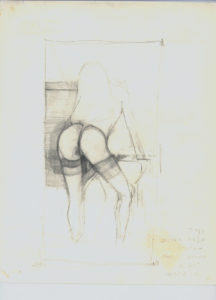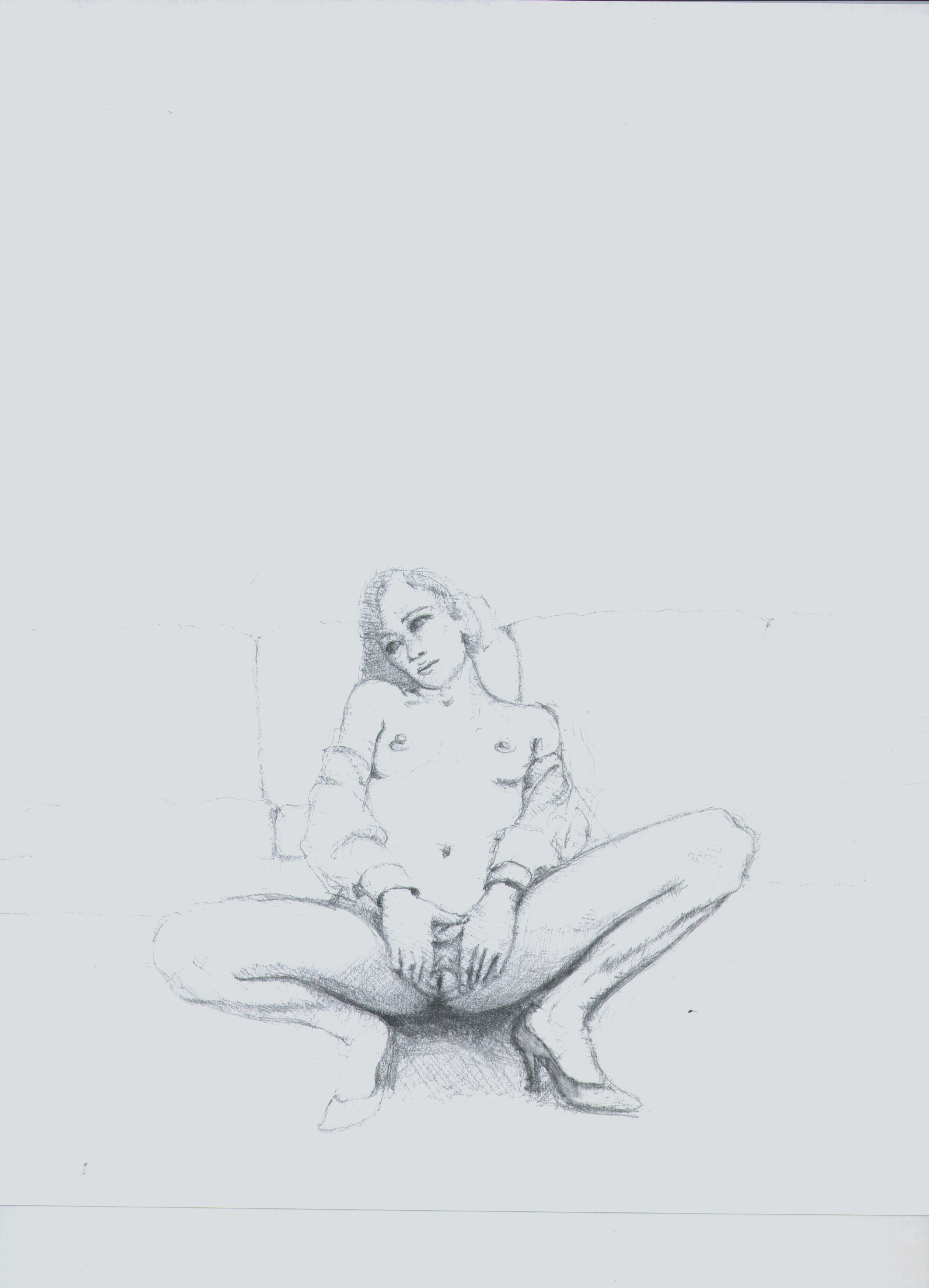“Dan Fine Video installastions” Catalogue, published July,2000
“Visuality and the Booth”
By B i l l A r n i n g
Among our senses, sight occupies the privileged spot atop the cultural hierarchy. Taste, smell and touch all seem to be as fully functional in slugs as in humans and the unconscious nature of the way we respond to a stroke or a stink seems too simple to aid in the justification for our high position on the planet. Hearing is more highly regarded, as our ears can discern the intricacies of Bach and the subtleties of language. But still it is vision that sits like a queen atop the hierarchy. To perceive with the eyes has been considered as more than merely a catalyst for thought, but as a type of thought itself. Vision, as a word, is synonymous with insight and reason, and the glories of the Renaissance are linked forever with the discovery of perspective.
 When we stand rapt before a Vermeer painting of a woman we are transported into reverie by his preternatural prowess with paint and by the pleasure of untangling his complex symbolism. Nonetheless, despite the elevated hedonistic pleasure of the experience, one feels as if one’s act of contemplation, in and of itself, is making a contribution to the highest values of civilization. Could we still feel that way if the subject of the painting turned towards us, took off her clothes and began masturbating in order to incite us to do the same?
When we stand rapt before a Vermeer painting of a woman we are transported into reverie by his preternatural prowess with paint and by the pleasure of untangling his complex symbolism. Nonetheless, despite the elevated hedonistic pleasure of the experience, one feels as if one’s act of contemplation, in and of itself, is making a contribution to the highest values of civilization. Could we still feel that way if the subject of the painting turned towards us, took off her clothes and began masturbating in order to incite us to do the same?
Such a question may seem strange, but it is actually serious business in untangling the imbricated concepts of visuality, and is the central theme in the recent works of video installation artist Dan Fine. Inspired by the strange architectural inventions of New York’s sexual undergrounds, Fine looks not at the sociosexual behaviors of these spaces, as have most artists who have dealt with this material.
Rather, the artist has treated the spaces as unintentional yet rich experiments in scopophilic pleasure, akin to museums. Fine takes all the complications of sight that occur when we look at pictures of other beings – our eyes move swiftly between face and body, and they will appear either to return our stare or be unaware – and he has cubed this complexity. His projections appear to be conspicuously aware of our stares, respond to them, and provoke them. When there is more then one human in the room and more then one projected actor, I calculate the different voyeur-to-viewed combinations at 64. This would be true if his figures were merely sitting fully clothed, hands folded in their laps. But Fine wants this to be more anxiety producing than such an academic exercise would have been.
Video installation as one of the dominant mediums today generally takes its form from the conventions of movie theaters, but Fine uses the sub-cultural architectural motif of the “booth store” as his form. I must explain this term as “booth stores” have a strange history and are not known in much of the world. Small cramped booths are aligned in rows and a small screen shows a selection of porn videos and the stores proudly advertise the large number of channels available. Before video, porn was available only on film and projected in theaters. If you wanted to masturbate while watching them you were still visible in the murk and others would be watching you. When VCRs were invented it was thought that public porn was history, but booths solved that. For many men, and we are talking about male behavior only, they did not want others to know what their tastes ran to – She-males or bondage – so they entered a booth and no one knew which video they watched. Adopting the same model, some stores invented more expensive booths with live strippers on the other side who would “perform” for tips and not care what you did with yourself while they rubbed their breasts on the Plexiglas barrier*. It also turned out that many men missed the communal masturbation of the old porn theaters, and to accommodate them the stores added windows between the booths with curtains that could be raised if both parties agreed, which added to the visual complexity of the experience.
 In each of these situations one is looking at scenes that transpire framed within a rectangle, or – as in the case of the “buddy booths” used by Fine in the “Booth” series multiple rectangles. That means that we are squarely within the Western picturing tradition, which begins with painting and has added photography, film, television and the computer screen over the last two hundred years. In each of these the author of the picture does not give you a choice as to perspective, since that is chosen by the artist and fixed.
In each of these situations one is looking at scenes that transpire framed within a rectangle, or – as in the case of the “buddy booths” used by Fine in the “Booth” series multiple rectangles. That means that we are squarely within the Western picturing tradition, which begins with painting and has added photography, film, television and the computer screen over the last two hundred years. In each of these the author of the picture does not give you a choice as to perspective, since that is chosen by the artist and fixed.
Dan Fine, in each of his installations, also gives you no choice as to perspective or body orientation, leaving only the duration of your visit up to you. In all the ones that I have experienced the space is slightly uncomfortable, making you want to leave. Fine understands the power of voyeurism, and in most cases people remain for his entire scenario. Even if the model on view is not what turns you on, one is transfixed by their exhibitionistic display and stays put. One has to admit the fact that one has stayed, and must therefore take responsibility for one’s desire to see the flesh of another.
According to the artist, women are on the whole more at ease watching and talking about their experiences afterwards. That makes sense as (based on my admittedly unscientific survey of my friends) most men have some history of being in irrational heat in such a booth, whereas women are more likely to do their porn viewing at home with a loved one.
Today most women, schooled in current feminist thinking, do admit that visual erotic images can give them pleasure and that not all such images are degrading to women.
In fact, one of the things Fine has been very careful to do is to give the women and the occasional male strippers agency. They do not look desperate or out of control. In fact Fine deliberately confuses his control of our situation as scriptwriter and director with our incorporeal if real-appearing friends’ ability to control our behavior, rendering his presence in our spectatorship invisible. In Booth 3 the women who slowly undress hold on to the light-switch, strip at their own pace, and when they are done with us switch off the lights whether we are ready or not. In Girl in a Box the woman speaks to us somewhat confrontationally to ask us to consider our act of looking. In She’s from Texas the model’s decision as to why she has agreed to strip naked is the subject. The “male gaze” of the viewer – of whatever gender – carries no phallic power. Rather, Fine makes us admit that the act of looking most often requires us to admit our powerlessness over our desire and before beauty.
 Which is precisely the lesson we could have learned from that Vermeer painting. Looking at pictures can be a form of thinking but contains within it the same animalistic desires that taste and touch do. I was reminded of that recently when I had but three hours to go through the National Gallery in Washington DC. Even after I could no longer absorb any more masterpieces, I kept going, as I did not know when I would be there again. And that night I was at a seedy bar called “Wet” with about twenty stark naked strippers and even after I could no longer
Which is precisely the lesson we could have learned from that Vermeer painting. Looking at pictures can be a form of thinking but contains within it the same animalistic desires that taste and touch do. I was reminded of that recently when I had but three hours to go through the National Gallery in Washington DC. Even after I could no longer absorb any more masterpieces, I kept going, as I did not know when I would be there again. And that night I was at a seedy bar called “Wet” with about twenty stark naked strippers and even after I could no longer
derive pleasure from looking I did not want to leave and break visual contact
Is there is a difference between the two acts of looking? Discounting any moralistic argument against erotic voyeurism, the thoughts provoked by the paintings were more diverse then that of the naked flesh, which tended to be rather similar, body after body, so there would be that qualitative difference. But the similarities, the hunger to gain pleasure with my eyes, were startlingly similar.
Dan Fine’s installations are calculated experiments to get each viewer to ask these questions of themselves, and in the process to learn about their own scopophilia within the tradition of the picture. Happy Looking.
*In some spaces there is no glass, and some actual sex could be bought, but once we round that corner the visual becomes secondary, so those cases do not concern us here.
Bill Arning is the curator at The List Center for Visual Art at MIT in Cambridge, Massachusetts and an independent curator based in New York. He writes frequently on art for Art in America, The Village Voice, World Art, Time Out New York, Trans, Polliester, Bomb, and Honcho magazines.